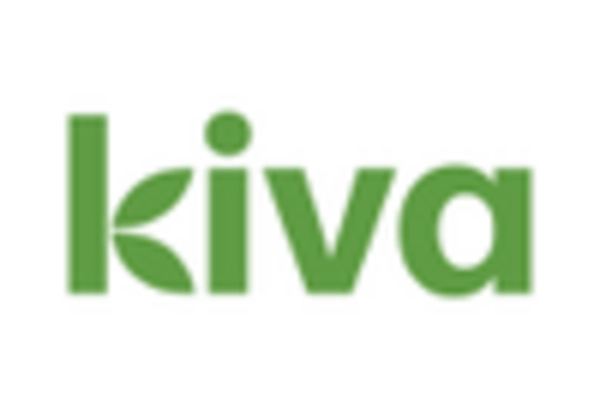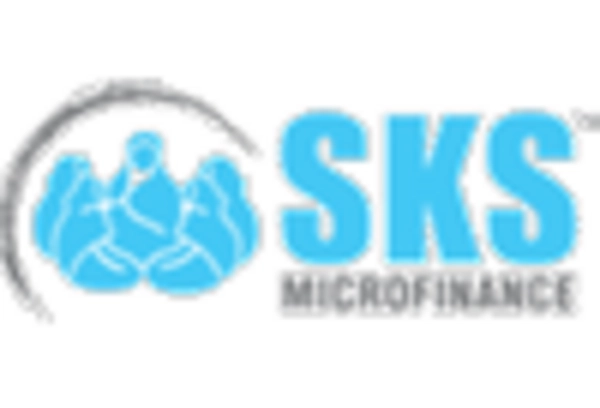Supportive Regulatory Environment
The Microfinance Market benefits from a supportive regulatory environment that encourages the growth of microfinance institutions. Many governments are recognizing the importance of financial inclusion and are implementing policies that facilitate the establishment and operation of microfinance entities. For instance, regulatory frameworks are being developed to ensure consumer protection while promoting responsible lending practices. As of 2025, several countries have enacted laws that provide tax incentives and funding opportunities for microfinance initiatives. This supportive landscape is likely to attract more investors and stakeholders, thereby enhancing the overall sustainability and reach of the Microfinance Market.
Increased Access to Financial Services
The Microfinance Market is experiencing a notable increase in access to financial services, particularly in underserved regions. This expansion is driven by the proliferation of mobile banking and digital platforms, which facilitate easier transactions and loan applications. As of 2025, it is estimated that over 1.7 billion adults remain unbanked, highlighting a substantial opportunity for microfinance institutions to bridge this gap. By providing small loans and financial products tailored to low-income individuals, the industry is likely to empower entrepreneurs and stimulate local economies. Furthermore, the rise of fintech companies is enhancing competition, leading to more innovative solutions and better service delivery within the Microfinance Market.
Rising Awareness of Financial Literacy
The Microfinance Market is increasingly influenced by a rising awareness of financial literacy among low-income populations. Educational initiatives aimed at improving financial knowledge are gaining traction, empowering individuals to make informed financial decisions. As of 2025, it is estimated that financial literacy programs have reached over 50 million people, fostering a culture of savings and responsible borrowing. This heightened awareness is likely to lead to a more informed customer base, which can positively impact repayment rates and overall financial stability. Consequently, microfinance institutions are recognizing the importance of integrating financial education into their service offerings, thereby enhancing their role in promoting sustainable economic development within the Microfinance Market.
Growing Demand for Micro-Insurance Products
The Microfinance Market is witnessing a growing demand for micro-insurance products, which are designed to protect low-income individuals against unforeseen risks. As more people engage in entrepreneurial activities, the need for financial security becomes paramount. In 2025, the micro-insurance sector is projected to reach a value of approximately 5 billion USD, indicating a significant market potential. This trend suggests that microfinance institutions are increasingly diversifying their offerings to include insurance products, thereby enhancing their value proposition. By integrating micro-insurance with traditional microfinance services, institutions can provide comprehensive financial solutions that cater to the unique needs of their clients, ultimately fostering greater financial resilience.
Technological Advancements in Financial Services
Technological advancements are playing a crucial role in shaping the Microfinance Market. Innovations such as blockchain, artificial intelligence, and data analytics are transforming how microfinance institutions operate. These technologies enable better risk assessment, streamlined operations, and enhanced customer engagement. In 2025, it is anticipated that the adoption of technology in microfinance will lead to a reduction in operational costs by up to 30%, allowing institutions to offer more competitive rates. Moreover, technology facilitates the collection of data, which can be leveraged to tailor financial products to meet the specific needs of clients. This trend indicates a shift towards more efficient and customer-centric services within the Microfinance Market.


















Leave a Comment